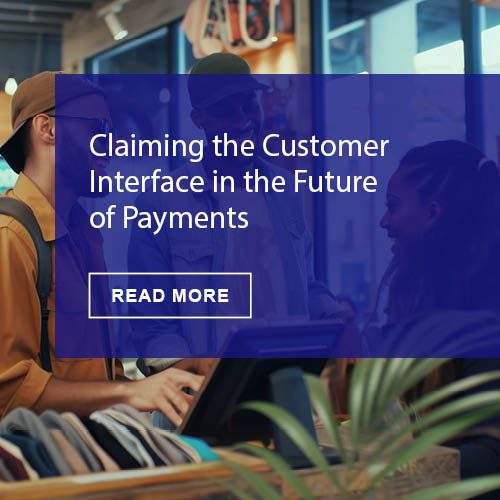2015 has been called “The Year of Mobile Payments.” CMO.com found a majority of consumers are interested in and willing to make transactions via their smartphones, with Goldman Sachs predicting annual mobile spending will reach $650 billion by 2018. Yet, while most are willing, only about 10 percent of shoppers actually make mobile purchases.
By almost any measure, the contactless payments space has struggled to reach its full potential and hit its stride among consumers. A diverse, often disjointed, array of options has led to confusion and uncertainty among users and, in turn, led to hesitance among businesses to upgrade their terminals with technology that can accept contactless payments. New technologies and solutions emerge in an effort to change the payments game and establish themselves as key players. In reality though, they are creating more fractures and deepening the divide.
For consumers to begin using contactless payments as effortlessly as traditional cash and credit cards, the mobile payment landscape needs to become much more unified and universal and overcome three of its biggest obstacles: a poor and inconsistent customer experience, lack of targeted integration and concerns surrounding security. All of these stem from the point-of-sale.
Cloud-based payment solutions combined with on-device technologies such as Host Card Emulation (HCE) leverage the NFC capabilities of mobile phones to securely transport, manage and process user credentials between a remote server and a POS terminal – bringing the pieces of the contactless payment puzzle together and bridging existing gaps. By improving the user experience, elevating connectivity and heightening security, cloud-based contactless options can tackle the three major obstacles listed below and facilitate more widespread adoption:
Challenge 1: Inconsistent customer experience
The contactless payments playing field is fragmented. A variety of big brand mobile options – like Apple Pay, Android Pay and Samsung Pay – only operate on their respective phone models or rely on mobile network operators (MNOs) and hardware manufacturers. Aggregate services – like Current C and Plenti – mesh payments and loyalty but are not universally accepted. Even social platforms like Facebook and Snapchat are getting in on the payments game by implementing peer-to-peer cash sharing options. Banks and card issuers are feeling real pressure to finalize their mobile strategies and bolster their customer relationships by developing their own wallets and branded applications.
Solution: The form-factor agnostic nature of cloud-based payments can unify the industry by providing customers with a personalized and trusted experience. Cloud technologies present businesses with unparalleled tools and flexibility to manage credentials, payment transactions and account settlement for an increasingly mobile oriented consumer. With operations occurring within cloud-based systems of card-issuing organizations, they have complete control over their program – from layout and design, to consumer accounts, to security. This gives businesses the flexibility to create a program that is truly their own and increases confidence from customers who already trust these groups to manage their sensitive data.
Challenge 2: Lack of integration
In today’s day and age, there’s an app for everything. According a survey conducted by DigitalTrends in June, 2015 US consumers spend more than 4.5 hours a day on their smart phone. And according to similar article from TechCrunch, 85 percent of that time is spent inside mobile applications. But these mobile services are not always as actionable as we would like. Mobile sites and applications offer consumers great content but the lack of integration with the offline world disjoints the user experience and adds friction. As a result, the value created by mobile content and messaging delivery is vastly reduced from what it could be. In-app mobile payments also have the potential to spark an interactive “virtual dialogue” between consumers and merchants. Instead, many of today’s contactless platforms are a single use, one-way communication dump from merchant to consumer.
Solution: Cloud-based technologies can streamline the customer and merchant POS experience through the ability to host and use multiple cards (even those outside the realm of payments). Real-time geolocation features can even tailor the buying experience to each unique shopper. Customers can utilize several credit and debit cards in addition to reward and promotion cards. Virtual loyalty cards with live balances of points and coupons for discounts can be integrated alongside payment accounts as well. Additionally, merchants can reach mobile users from the moment they enter the store with a real-time connection via the cloud. Examples include sending targeted recommendations or timely promotions based on their purchase history for a more tailored shopping experience. What’s more, consumers can transition between online connectivity and going offline without losing access to their accounts as cloud-technologies operate on privately managed servers. Merchants can also better control their mobile experience by remaining connected to customers without depending on an unreliable network or spotty connection.
Challenge 3: Questions surrounding security
Everyone from card-issuing organizations to consumers have questions regarding the security of contactless payments. Some are skeptical about whether or not they are as secure as traditional cards. Others are hesitant to rely on tokenization to secure such transactions. Even more fear the outcome should a device be lost or stolen.
Solution: The safeguards that accompany cloud-based programs are significantly more secure than traditional magnetic stripe technologies. Cloud technologies tokenize or assign random place-holding characters to credentials and store them via a virtual secure element (VSE) to minimize visibility into real accounts. That way, only random values are exchanged and sensitive information never actually touches the vulnerable servers of merchants. Additionally even when a phone is not in the possession of its owner, real-time cloud capabilities can freeze accounts and update them as necessary to prevent any fraudulent activity.
Often, the low adoption rate of mobile payments is attributed to consumers’ habits and preferences. In reality, many businesses have not looked beyond the initial perceived challenges to make the technology more readily available to their consumers. Card issuers and solution providers alike must make a more concerted effort to overcome these top challenges, and look to cloud technologies to drive greater usage and acceptance.











